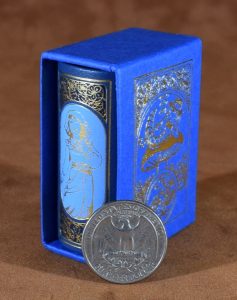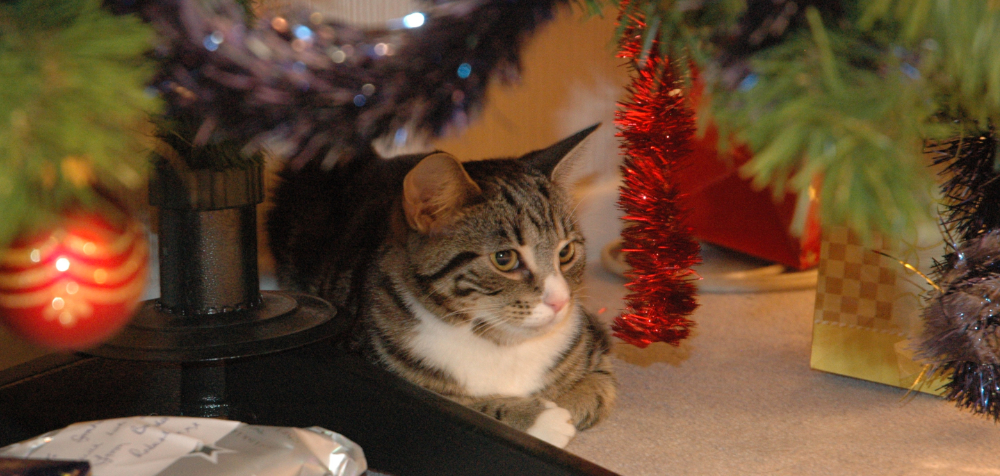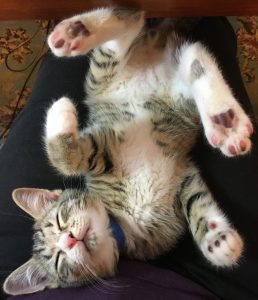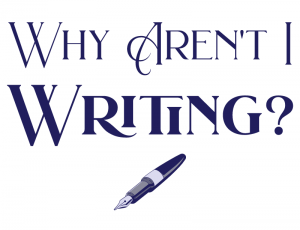Hi there,
It’s a bit parky round these parts right now. Cold enough to freeze the balls off a brass monkey, in fact. The urge to work from actually-in-bed is strong, though I fear that my back wouldn’t like it very much, and it would be a bit tricky to do conference calls.
Suw’s News: Another rejection
I got my rejection email from the Channel 4 Screenwriting Course 2023 competition on Sunday evening.
I remember when I first started getting interested in screenwriting, just after the turn of the millennium. I had joined the Zoetrope screenwriting community and there I met some really good writers, all of whom were struggling to get a foot in the door. Most failed, despite their talent and perseverance. I won a Zoetrope competition for a feature film script, but seeing what my friends were going through, I decided that the whole endeavour was a hiding to nothing and gave up.
I’m beginning to feel the same way again. Surely there’s a better way to discover and bring on talent than forcing people to enter an endless stream of oversubscribed competitions from which you, as the entrant, learn absolutely nothing? I find writing screenplays far easier and more enjoyable than writing novels, but at least with a novel you can self-publish if you can’t find an agent.
WTF is ChatGPT?
There has been a huge amount of talk this week about ChatGPT, which is a… well, I’ll let ChatGPT tell you itself.
Prompt: What is ChatGPT?
ChatGPT is an AI chatbot powered by OpenAI’s GPT-3 natural language processing engine. It can be used to generate natural language conversations and responses to questions.
Most people have been taken aback by ChatGPT’s fluency, because it really can produce content that sounds like it was written by a human being. For example, I asked it to write a novel synopsis for me and it produced something that would be quite plausible for a children’s book:
Prompt: Write a novel synopsis about a magical cat who has to save her family from a group of evil ferrets.
In the small town of Maple Grove, a magical cat named Sprinkles is living an ordinary life with her family. But when a group of evil ferrets arrive in town, Sprinkles must use her special powers to save her family from their sinister plot.
The ferrets have come in search of a powerful magical artefact, an ancient stone that is rumoured to be hidden somewhere in Maple Grove. They will stop at nothing to find it and use its power to take over the town.
Sprinkles and her family must race against time to find the stone before the ferrets do. Along the way, Sprinkles discovers her own special powers and meets other magical animals who help her on her quest.
As the ferrets close in, Sprinkles must use all of her courage, strength, and magic to protect her family and save Maple Grove.
Not only has it taken the concepts I gave it in the prompt, it’s added names, places, a MacGuffin and sketched out a basic plot. Whilst its ideas might be a wee bit trite and formulaic, they are functional. You could actually write this book. In fact, with enough patience and the right prompts, ChatGPT could probably write this book for you.
I think it’s immediately apparent why some people are concerned. One person in a Facebook group for screenwriters that I’m in suggested that it’s only a matter of time before screenwriters are replaced entirely, because scripts are more structural than, say, novels and thus lend themselves to being written by AI.
Tech luminary Simon Willison had a poke at ChatGPT’s limitations. It can write poetry, jokes and code, and can even explain concepts, but it won’t suggest crimes for you to do. Unless you trick it, which turns out to be quite easy.
Gary Marcus points out that it’s basically a giant pastiche engine which mashes together things that humans have said and then relies on synonyms for colour, rather than constructing answers from first principles. As plausible as it is, it can’t tell the difference between information and junk. And, like a lot of AI, sexism and racism is baked in, likely along with a lot of other prejudices that are common in human discourse.
Other people, such as Andrew Mayne, novelist and sci comms guy for OpenAI who made ChatGPT, are more excited by the opportunities for it to help with brainstorming and planning. I started playing with it for exactly that purpose last night, and it was interesting, to say the least. But I wouldn’t take its word for anything. Perhaps we need an AI that can factcheck output from AIs, as Charles Arthur tweeted.
ChatGPT is impressive, and whilst it does have some fairly significant flaws, it’s only going to improve. So what will it mean to be an author in an era, coming soon to an Earth near you, where computers can write as well as humans?
Read these: Why was Top Gun Maverick such a surprise hit?
The internet threw a couple of links in my lap this week about Top Gun: Maverick and why it’s been such a huge hit, particularly given that the 1986 original was a fairly simple, one-note affair.
The BBC’s Nicholas Barber points to a heady combination of nostalgia and excellent structure, pacing, dialogue and action. But also important is the fact that there has been no sequel, prequel or reboot:
None of this emotional heft would have been there if other Top Gun sequels and reboots had been made already. The 36-year gap ensured that Top Gun: Maverick was about more than just a nifty fighter pilot with a killer smile. It was about ageing and mortality, memories and regrets, holding on and letting go. It was about time passing – not just for Pete, or for us, but for cinema.
Collider ran a piece by Joshua Bateman earlier in the year listing 6 Things Top Gun: Maverick Does Better Than the Original, which explores the way that Maverick leans on nostalgia, echoing key scenes from the original and using the same music. Hell, even Goose’s son’s callsign of Rooster rhymes (ish) with his dead father’s.
But the main thing Maverick gets right, which the original failed on, is emotional depth. It’s not just that the characters are more well-rounded, but also that their relationships are deeper and their motivations more fully explored. It’s because of this that the nostalgia works – the relationships evolved over both films, so memory of the original primes us for resolution in the sequel.
There is, I think, a lot to learn from Top Gun: Maverick. So, out of curiosity, I asked ChatGPT what it thought were the film’s most important lessons:
Prompt: What can screenwriters learn from the film Top Gun: Maverick?
1. Know your audience: Top Gun: Maverick was made with the same core audience in mind as the original Top Gun, but it also took into account the modern audience and their interests. Screenwriters should always be aware of their target audience when writing, and strive to make sure their stories resonate with them.
2. Show, don’t tell: Top Gun: Maverick was great at showing the audience the characters and their relationships, rather than just telling them. For screenwriters, this is an important lesson: try to show the audience what is happening, rather than just describing it.
3. Balance nostalgia and innovation: Top Gun: Maverick was successful in bringing back the nostalgia of the original Top Gun while also introducing new and fresh elements. Screenwriters should strive to strike a balance between the familiar and the new, as it can be a great way to keep their audience engaged.
4. Use visuals to tell stories: Top Gun: Maverick was full of stunning visuals that told stories and moved the plot along. Screenwriters should take note of this and use visuals as much as possible to help tell their stories.
Spooky.
Or, possibly, generic advice you could give about any sequel.
Review: The Last Graduate by Naomi Novik
 I powered through The Last Graduate, the second book in Novik’s Scholomance series, in just four days, though in part that was because I had a fair amount of train time to kill, which helped. But mostly it’s because this is just as much of a page-turner as A Deadly Education (review here).
I powered through The Last Graduate, the second book in Novik’s Scholomance series, in just four days, though in part that was because I had a fair amount of train time to kill, which helped. But mostly it’s because this is just as much of a page-turner as A Deadly Education (review here).
El Higgins has survived through to her senior year in the Scholomance and is finally shucking off her reputation as a scary loner and building up not just alliances but a circle of actual friends. As the senior students work towards their final graduation ceremony – which essentially involves running a gauntlet of monsters and trying not to get eaten – she begins to realise that the tradition competitive approach might not be the best way to survive.
I love this series so much. It’s honestly one of the best I’ve read in ages and I can’t wait to read the finale!
Meantime, I asked ChatGPT to whip up a review for me. Well, perhaps our jobs aren’t at risk just yet. (Give it time, though.)
Prompt: A review of Naomi Novik’s novel, The Last Graduate.
Naomi Novik’s The Last Graduate is a captivating tale of adventure and fantasy, set in a university on the brink of chaos. The main character, Celeste, is a brilliant young woman who is determined to get her degree and live a life of accomplishment. Along the way, she discovers secrets and mysteries that threaten the very existence of the university and its inhabitants.
Novik’s use of vivid imagery and descriptions of the university and its students brings the world of The Last Graduate to life. The characters are well-developed and the plot is fast-paced and engaging. Celeste’s journey is filled with danger and excitement, as she struggles to uncover the truth and protect her beloved school.
The Last Graduate is a thrilling and engaging read that will leave readers wanting more. Novik’s writing is crisp and engaging, and her characters are three-dimensional and believable. The novel is a great choice for readers of all ages who enjoy fantasy and adventure stories. Novik has created a world that is both thrilling and thought-provoking, and readers will be left wanting more.
Obligatory cat picture
I’m down in Dorset again, so this week’s photo is of Cassie. And I shall give ChatGPT the final word:
Prompt: A calico cat is curled up on a sofa, tail over her nose. What is she thinking?
She is contentedly dreaming of chasing mice and birds and playing in the grass. She is content in her cozy spot, happy in her own little world.
And in all honesty, she probably is.
All the best,
Suw

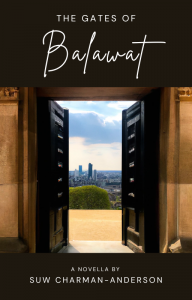 If you missed last week’s newsletter, you’ll be delighted to know that you can now download your free copy of my urban fantasy novella, The Gates of Balawat (for those not subscribed to my email, just sign up now and you’ll get a download link as soon as you’ve confirmed your subscription).
If you missed last week’s newsletter, you’ll be delighted to know that you can now download your free copy of my urban fantasy novella, The Gates of Balawat (for those not subscribed to my email, just sign up now and you’ll get a download link as soon as you’ve confirmed your subscription).